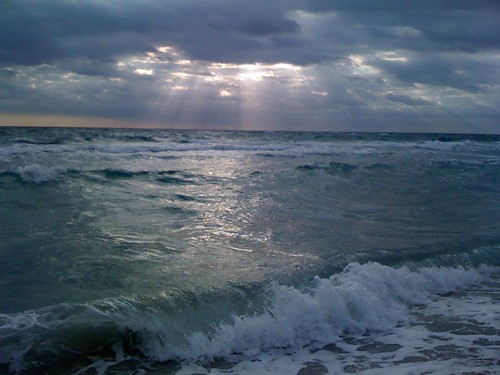While walking on the beach the other morning I noticed the sand was littered with little blue jellyfish. It's been pretty cold in Florida this winter—nothing of course, to what the northeast has been experiencing, but still cold. I'm not familiar enough yet with the area to know weather the temps are radically affecting the sea life or this is the seasonal jellyfish time. I'd seen them before on the beach, but not in such great numbers. Anyway, I rolled up my pants and strolled along the water's edge.
After my walk, when I got back upstairs I noticed that there were some red marks on my lower legs, which felt itchy and hot. Not welts or anything, more like a slight allergic reaction. I put on some hydrocortisone cream while I did some quick internet surfing to determine the cause, or more correctly, my suspicions of the cause, suddenly remembering that the day before the lifeguards had put up the purple flag—dangerous marine life. This is the sign I ignored:
Lo and behold, man o' war, which are not exactly jellyfish at all, but technically—Animalia Cnidaria Hydrozoa Siphonophora Physaliidae Physalia P. physalis—or Physalia physalis for short. Thanks, Linnaeus. But who's quibbling? The bottom line is that I was very, very lucky, as I was probably only slightly brushed by a creature while wading. Or maybe I was just reacting to residual venom in the water. Or maybe the small size and youth of the animals was a factor. Either way, it was a learning experience.
The funny thing is a day later, there isn't a single man o' war on the beach. The waves brought them in and brought them back out again. Every day is different.





0 comments:
Post a Comment